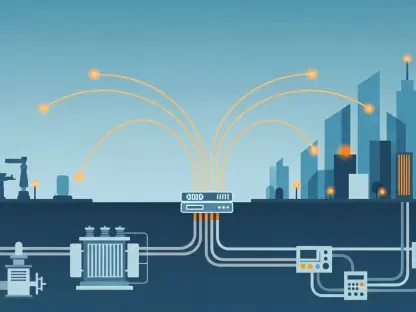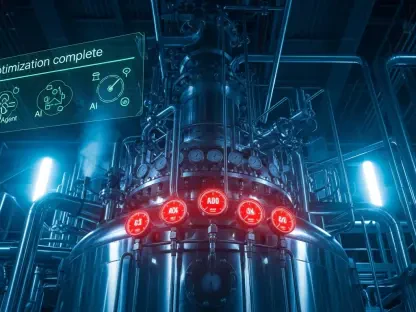In a landscape where agriculture meets industrial innovation, Haryana stands at a pivotal moment with Kubota Corporation’s staggering ₹2,000 crore (approximately $240 million USD) investment in farm machinery and tractor manufacturing. This landmark commitment, forged in partnership with Escorts, not only underscores the state’s rising prominence as an economic powerhouse but also raises critical questions about the future of agricultural technology in India. How will this infusion of capital and expertise reshape farming practices, and what does it mean for market dynamics in a region already known for its industrial might? This analysis dives deep into the implications of this investment, exploring current trends, data-driven insights, and projections that could redefine Haryana’s role in the global farm equipment sector.
Unveiling Haryana’s Agricultural and Industrial Potential
Haryana, despite occupying just 1.34% of India’s landmass and housing 2.09% of its population, commands an outsized influence in the national economy. Renowned for producing 52% of India’s tractors and half of its cars, the state has cemented its status as a manufacturing hub, with Gurugram alone hosting offices of 400 Fortune companies. This backdrop of industrial strength, coupled with top-tier logistics—ranking second nationwide and first in North India—makes Haryana an attractive destination for foreign direct investment (FDI). The robust infrastructure, including extensive highway networks, rail connectivity, and universal village electrification, further amplifies its appeal to global players like Kubota seeking strategic expansion.
Beyond its industrial credentials, Haryana’s agricultural heritage provides fertile ground for investments in farm machinery. The state’s transition from a predominantly agrarian economy to a balanced industrial-agricultural model has been supported by business-friendly policies that prioritize ease of doing business (EoDB). This unique blend of capabilities positions Haryana as an ideal testing ground for merging cutting-edge technology with traditional farming needs, setting the stage for Kubota’s ambitious plans to revolutionize the sector with advanced equipment and localized solutions.
Dissecting Market Trends and Projections in Farm Machinery
Technological Innovation as a Market Driver
Kubota’s investment signals a seismic shift toward precision agriculture in Haryana, aligning with global trends that emphasize efficiency and sustainability. The collaboration with Escorts aims to produce state-of-the-art tractors and farm equipment tailored to Indian conditions, potentially increasing productivity through mechanization and smart farming tools. Market data suggests that the adoption of such technologies could reduce labor dependency by up to 30% in key agricultural zones over the next five years, a critical factor given the ongoing rural workforce challenges in India. However, the high initial costs of advanced machinery may pose adoption barriers for small-scale farmers, necessitating innovative financing models or subsidies.
The broader market for agricultural machinery in India is projected to grow at a compound annual growth rate (CAGR) of 7.5% from 2025 to 2030, driven by increasing demand for mechanized solutions amid shrinking arable land and rising food needs. Haryana, with its concentrated industrial base, could capture a significant share of this growth, especially as Kubota introduces AI-driven tools and eco-friendly equipment. This technological push might also spur competition among domestic manufacturers, potentially lowering costs and accelerating market penetration across diverse farming communities.
Economic Impacts and Employment Opportunities
A key facet of this investment is its potential to reshape Haryana’s economic landscape through job creation. Industry estimates suggest that the new manufacturing facilities could generate thousands of direct and indirect jobs, particularly in skilled areas like machinery operation, maintenance, and technology integration. This aligns with the state government’s focus on empowering youth through vocational training, positioning Haryana as a leader in industrial employment growth within the region. Proximity to major markets and superior logistics infrastructure further enhances the economic multiplier effect, promising quicker returns on investment compared to other states.
Nevertheless, challenges remain in aligning local skill sets with the demands of high-tech manufacturing. Without targeted training programs, there is a risk of underutilization of opportunities, which could dampen the long-term benefits. Market analysts highlight that addressing this gap through public-private partnerships could ensure a steady supply of qualified workers, thereby sustaining the momentum of economic growth driven by such large-scale investments. The ripple effects might extend to ancillary industries like logistics and spare parts, creating a robust ecosystem around farm machinery production.
Competitive Positioning and Global Market Influence
Haryana’s compact geography and strategic location near key urban centers provide a competitive edge in the global farm machinery market. Unlike larger states with dispersed industrial zones, the state’s concentrated industrial estates facilitate efficient production and distribution, a factor likely influencing Kubota’s decision. This investment also reflects a broader trend of multinational corporations leveraging India’s cost advantages and skilled labor to establish manufacturing hubs, with Haryana emerging as a frontrunner due to its established industrial reputation and supportive regulatory framework.
Looking ahead, the partnership between Kubota and Escorts could inspire similar collaborations across India, potentially positioning the country as a global exporter of agricultural equipment. Market projections indicate that India’s share in the international farm machinery market could rise by 15% by 2030 if such investments continue to prioritize innovation and scalability. For Haryana, balancing the needs of rural farmers with industrial ambitions will be crucial to maintaining this competitive edge, ensuring that benefits are equitably distributed across urban and rural sectors while navigating potential regulatory complexities in a dynamic market.
Reflecting on Strategic Implications and Future Pathways
Looking back, Kubota’s ₹2,000 crore investment in Haryana marked a transformative chapter in the state’s agricultural and industrial narrative, highlighting its capacity to attract significant FDI through a blend of infrastructure strength and policy support. The initiative underscored the growing importance of technological integration in farming, alongside substantial economic benefits like job creation. For stakeholders, the path forward involves prioritizing farmer education and accessible financing to ensure widespread adoption of advanced machinery. Businesses are encouraged to explore complementary sectors such as skill development and logistics to amplify the investment’s impact. Meanwhile, policymakers need to focus on streamlining regulations and fostering partnerships to sustain this momentum, ensuring that Haryana remains a beacon of innovation and growth in the global farm equipment market for years to come.









